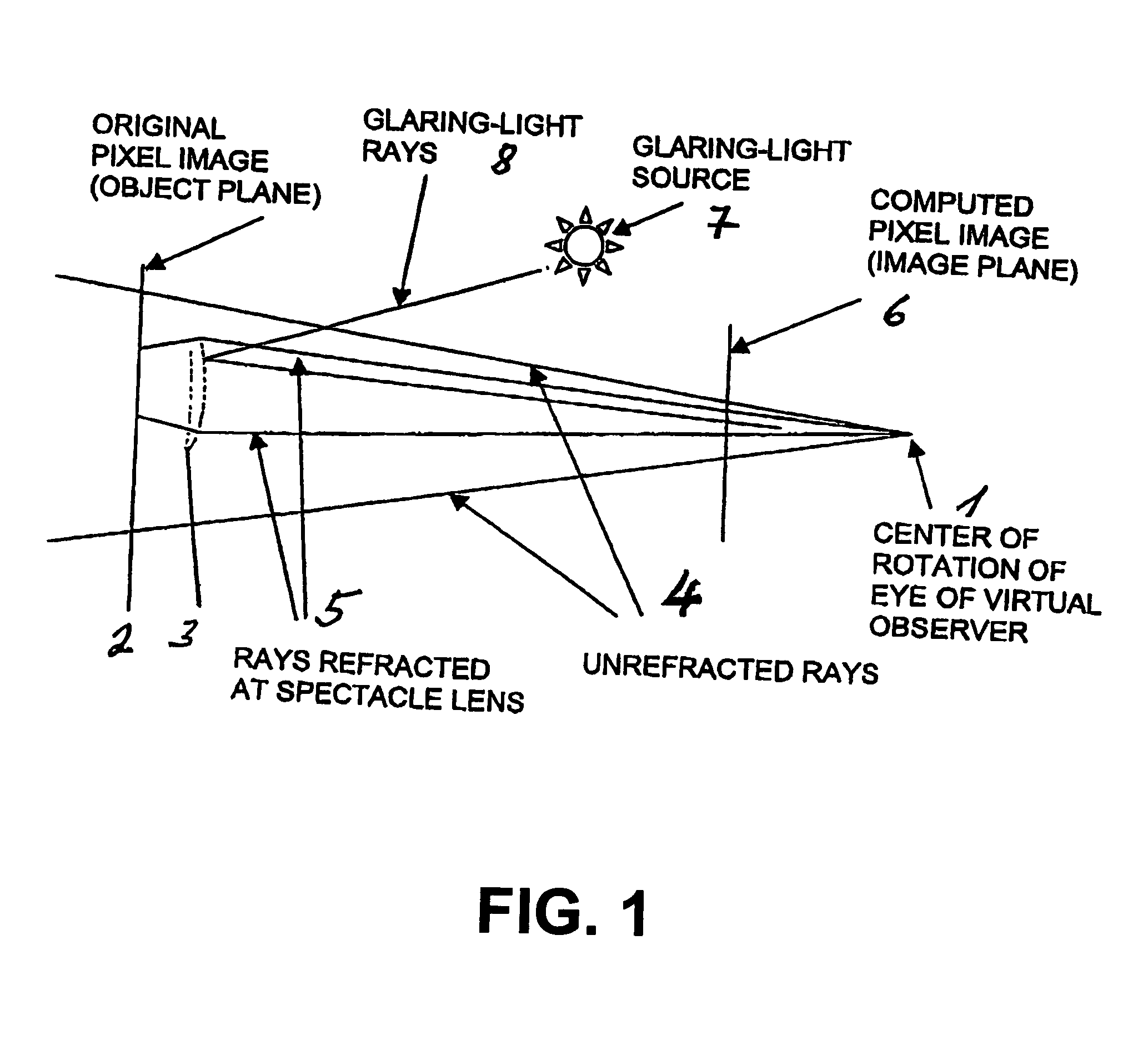Method for simulating and demonstrating the optical effects of glasses on the human face
a technology of optical effects and glasses, applied in the field of simulating and demonstrating the optical effects of glasses on the human face, can solve the problems of unable to assess his own appearance when using these spectacle lenses, unable to achieve the assessment of various spectacle frames, and enormous technical complexity of products
- Summary
- Abstract
- Description
- Claims
- Application Information
AI Technical Summary
Benefits of technology
Problems solved by technology
Method used
Image
Examples
Embodiment Construction
[0009]It is the object of the invention to provide a method which will assist the spectacles wearer when purchasing spectacles in making a decision for a certain type of lens and certain anti-reflective properties.
[0010]This object is achieved as in patent claim 1 which specifies a method for demonstrating the effect of a particular spectacle frame and of optical lenses fitted into this spectacle frame on the appearance of a spectacles wearer as it would be perceived by another person (virtual observer); the method having the following features:[0011]preparing an image of the face of the spectacles wearer in such manner that the image can be processed in a computer;[0012]determining an arrangement of the respective spectacle frame in front of the eyes,[0013]projecting the image of the face onto a plane by means of a computation (ray tracing) of principal rays passing through the center of rotation of an eye of the (virtual) observer, and thus producing a planar image of the face in ...
PUM
 Login to View More
Login to View More Abstract
Description
Claims
Application Information
 Login to View More
Login to View More - R&D
- Intellectual Property
- Life Sciences
- Materials
- Tech Scout
- Unparalleled Data Quality
- Higher Quality Content
- 60% Fewer Hallucinations
Browse by: Latest US Patents, China's latest patents, Technical Efficacy Thesaurus, Application Domain, Technology Topic, Popular Technical Reports.
© 2025 PatSnap. All rights reserved.Legal|Privacy policy|Modern Slavery Act Transparency Statement|Sitemap|About US| Contact US: help@patsnap.com



